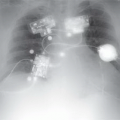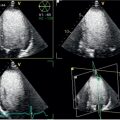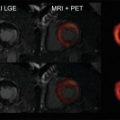Dental X-rays are an effective tool for dental diagnosis, complementing clinical and oral examinations. Above all, they enable visualization of structures or pathologies that cannot be seen during the consultation. They provide an indispensable aid to the dentist in detecting alterations or defects not visible during a conventional examination. Do you need a dental X-ray? This article will tell you everything you need to know about dental x-rays.
What is a dental X-ray?
As you might have guessed, dental X-rays or dental radiology is an imaging examination that enables dentists to monitor patients’ oral health. It provides a high-precision image of the dental arches and jaws. This gives the dentist more information about the condition of the mouth. Dental X-rays take just a few minutes to complete, quickly penetrating soft tissue and reaching hard tissue. As a result, it penetrates soft tissue and reaches bone, creating an image.
Dental X-rays are a tool that gives dentists a wider field of vision of the mouth, showing features that the human eye can’t see. They are generally used to check for cavities between teeth, gums, inflammation, abscesses or bone loss, wisdom teeth that haven’t yet erupted, etc. Dental X-rays are a common examination in dentistry and odontology, particularly before braces or aligners are fitted.
Dental radiology is generally carried out to:
- Prevent pathologies.
- Obtain more precise diagnoses before starting dental treatment.
- Monitor oral health.
When is a dental X-ray necessary?
The frequency with which the dentist performs an X-ray examination depends not only on the patient’s current oral health but also on his or her age, risk of developing possible oral pathologies, and possible symptoms of oral disease.
Children may need dental X-rays more often than adults, as they are in the process of developing their teeth and jaws. They are also more likely to be affected by cavities. The dentist examines the patient’s medical history and oral cavity before deciding whether an X-ray is necessary.
As in other medical disciplines, dental radiography is used by the dentist to carry out a complete study of the oral structures of the jaws, teeth, and soft tissues. To avoid misdiagnosis, the dentist will always determine which type of X-ray to take. As a rule, you should have a dental X-ray when the doctor tells you to. The need for an X-ray depends on various factors, such as age, oral health, or the presence of pathologies, pain, or discomfort.
What are the different types of dental X-rays?
In dentistry, there are two main types of dental X-ray: intraoral and extraoral.
Intra-oral radiography
Intra-oral radiography is radiography taken from inside the mouth, using X-ray plates of various sizes. There are two main types:
- Periapical radiography: in this type of radiography, the entire tooth is observed from the root tip to the crown of the tooth, in addition to the bone on which it stands.
- bite-wing radiography: to take this type of radiograph, you bite down on an X-ray plate that allows you to see the patient’s dental crowns and the roots of the teeth.
The advantage of this type of radiography is that you can see all the back teeth on one side of the patient’s mouth. It is particularly useful for detecting caries and periodontal disease.
Extra-oral radiographs
Extra-oral radiographs are radiographs taken from the outside, allowing the whole mouth to be seen. Unlike intra-oral X-rays, the X-ray film is positioned outside the mouth. There are several types of dental examination in this category:
- Orthopantomography, also known as “panoramic” dental radiography, provides a more complete view of the jaws and teeth. It can be used to detect certain pathologies, tumors, abscesses, jaw fractures, wisdom teeth or abnormalities in tooth development.
- Dental CT: Dental CT is performed by an X-ray machine that rotates around the face and obtains many images of the patient’s mouth. It forms a 3D image that enables the patient’s anatomy to be examined. It’s a fast, highly accurate technique.
- cephalometry: this is a cranial analysis system that shows the distances between different dental and maxillofacial structures, whether bones, teeth, muscles or soft tissues. The image is created by lateral scrolling. It is mainly used for orthodontics.
What are the risks of dental X-rays?
In fact, there is a risk of radiation exposure when you have an X-ray at the dentist. The risk is very small, but it does exist.
Radiation exposure can cause damage to the body if not used correctly. The effects of this damage may not become apparent until several years after exposure.
There is also a risk of developing cancer from radiation exposure over time if you have several X-rays a year or if you have frequent X-rays throughout your life. The risk of developing cancer from dental X-rays is very low compared to other types of cancer risk, such as smoking or excessive sun exposure.
In fact, it is advisable to limit radiation exposure as much as possible, by only having the necessary dental X-rays every two or three years, rather than every year as is currently the case for some patients.
Today, dental X-rays are safe. This emergency dentist in Las Vegas explained that thanks to technological advances, radiation levels are low and localized. What’s more, the patient can use protective elements, so there are no real risks with dental X-rays, whether for children, adults, or pregnant women. However, during pregnancy, you should always seek your doctor’s advice before having a dental X-ray.
The importance of dental radiography
- Early detection: X-rays can reveal hidden problems, such as cavities between teeth, root infections, abscesses, or certain tumors.
- Treatment planning: They are essential for planning complex dental treatments, such as root canals, tooth extractions, or orthodontics.
- Oral health monitoring: They help track the progress of a treatment or the evolution of a dental condition.
Taking good care of your oral health is just as important as taking care of any organ or part of your body. Regular checkups and visits to your dentist will ensure your oral health is in good shape.
Stay updated, free articles. Join our Telegram channel

Full access? Get Clinical Tree








